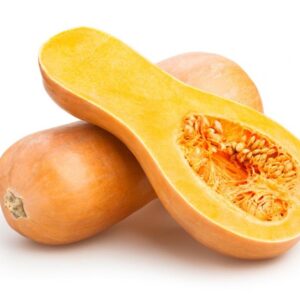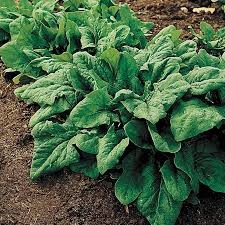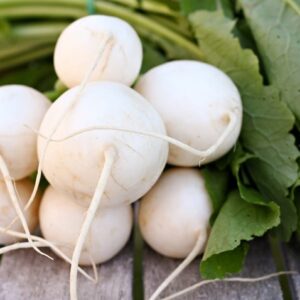Long Standing variety of coriander
Description of Long Standing variety of coriander
The Long Standing variety of coriander, also known as cilantro, is distinguished by its robust growth and extended harvest period. This variety is specifically bred for its ability to resist bolting, meaning it stays in the leafy stage for a longer duration before flowering. As a result, Long Standing cilantro allows for an extended window of time to harvest its flavorful leaves.
Similar to traditional cilantro varieties, Long Standing cilantro features bright green, finely divided leaves with a distinctive citrusy aroma and refreshing taste. It’s commonly used in a variety of culinary dishes, including salads, salsas, soups, curries, and stir-fries, adding a burst of flavor and freshness. Additionally, the seeds of Long Standing cilantro, known as coriander seeds, can be harvested and used as a spice in cooking.
Overall, the Long Standing variety of coriander is valued for its vigorous growth, prolonged harvest period, and culinary versatility, making it a popular choice for home gardeners and culinary enthusiasts who want to enjoy fresh cilantro leaves over an extended period.
Planting instructions for long standing variety of coriander
To plant Long Standing variety of coriander (cilantro), follow these steps:
- Select the Right Location: Choose a location with well-draining soil and partial to full sunlight. Coriander prefers cooler temperatures, especially during the growing season.
- Prepare the Soil: Work the soil to a depth of about 8 to 10 inches, removing any rocks, weeds, or debris. Coriander thrives in fertile, loamy soil with a pH between 6.2 and 6.8. Amend the soil with organic matter like compost or well-rotted manure to improve its texture and fertility.
- Planting Seeds: Coriander is typically grown from seeds. Sow the seeds directly into the prepared soil about ¼ to ½ inch deep. Space the seeds 6 to 8 inches apart in rows that are 12 to 15 inches apart.
- Watering: Keep the soil consistently moist but not waterlogged, especially during germination and growth. Water the plants deeply whenever the top inch of soil feels dry. Avoid overwatering, as cilantro does not tolerate soggy conditions.
- Thinning: Once the seedlings emerge, thin them to about 4 to 6 inches apart to allow for proper growth and airflow. Use scissors to snip off the weaker seedlings at the soil level rather than pulling them out, as cilantro has delicate roots.
- Mulching: Apply a thin layer of mulch around the plants to help retain moisture, suppress weeds, and regulate soil temperature. Mulching also helps prevent soil splashing onto the leaves, which can reduce the risk of disease.
- Fertilizing: Coriander doesn’t require heavy feeding, but you can side dress with a balanced fertilizer once or twice during the growing season to promote healthy growth. Avoid high-nitrogen fertilizers, as they can encourage excessive leafy growth at the expense of flavor.
- Harvesting: You can start harvesting cilantro leaves when they reach about 4 to 6 inches in height, typically 3 to 4 weeks after planting. Harvest by snipping off the outer leaves near the base of the plant, leaving the inner leaves to continue growing. Continuously harvest to encourage the plant to produce more leaves and delay bolting (flowering), which can cause the leaves to become bitter.
Description of Long Standing variety of coriander
The Long Standing variety of coriander, also known as cilantro, is distinguished by its robust growth and extended harvest period. This variety is specifically bred for its ability to resist bolting, meaning it stays in the leafy stage for a longer duration before flowering. As a result, Long Standing cilantro allows for an extended window of time to harvest its flavorful leaves.
Similar to traditional cilantro varieties, Long Standing cilantro features bright green, finely divided leaves with a distinctive citrusy aroma and refreshing taste. It’s commonly used in a variety of culinary dishes, including salads, salsas, soups, curries, and stir-fries, adding a burst of flavor and freshness. Additionally, the seeds of Long Standing cilantro, known as coriander seeds, can be harvested and used as a spice in cooking.
Overall, the Long Standing variety of coriander is valued for its vigorous growth, prolonged harvest period, and culinary versatility, making it a popular choice for home gardeners and culinary enthusiasts who want to enjoy fresh cilantro leaves over an extended period.
Planting instructions for long standing variety of coriander
To plant Long Standing variety of coriander (cilantro), follow these steps:
- Select the Right Location: Choose a location with well-draining soil and partial to full sunlight. Coriander prefers cooler temperatures, especially during the growing season.
- Prepare the Soil: Work the soil to a depth of about 8 to 10 inches, removing any rocks, weeds, or debris. Coriander thrives in fertile, loamy soil with a pH between 6.2 and 6.8. Amend the soil with organic matter like compost or well-rotted manure to improve its texture and fertility.
- Planting Seeds: Coriander is typically grown from seeds. Sow the seeds directly into the prepared soil about ¼ to ½ inch deep. Space the seeds 6 to 8 inches apart in rows that are 12 to 15 inches apart.
- Watering: Keep the soil consistently moist but not waterlogged, especially during germination and growth. Water the plants deeply whenever the top inch of soil feels dry. Avoid overwatering, as cilantro does not tolerate soggy conditions.
- Thinning: Once the seedlings emerge, thin them to about 4 to 6 inches apart to allow for proper growth and airflow. Use scissors to snip off the weaker seedlings at the soil level rather than pulling them out, as cilantro has delicate roots.
- Mulching: Apply a thin layer of mulch around the plants to help retain moisture, suppress weeds, and regulate soil temperature. Mulching also helps prevent soil splashing onto the leaves, which can reduce the risk of disease.
- Fertilizing: Coriander doesn’t require heavy feeding, but you can side dress with a balanced fertilizer once or twice during the growing season to promote healthy growth. Avoid high-nitrogen fertilizers, as they can encourage excessive leafy growth at the expense of flavor.
- Harvesting: You can start harvesting cilantro leaves when they reach about 4 to 6 inches in height, typically 3 to 4 weeks after planting. Harvest by snipping off the outer leaves near the base of the plant, leaving the inner leaves to continue growing. Continuously harvest to encourage the plant to produce more leaves and delay bolting (flowering), which can cause the leaves to become bitter.





